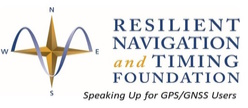This is the second in a series of posts that summarize interviews with important PNT users. Today’s is from a conversation with Mr. Joe Rolli of Harris, Inc. on the capabilities of one of their latest products, Signal Sentry 1000.
[Editor’s Note: This interview was conducted by RTNF intern Anna Blore. She is resuming her studies at UCLA where she is a junior in the Communications program. All of us at RNTF want to thank her for all her efforts this summer and wish her the very best.]RNTF: Joe, thanks for talking with us! Can you tell us why there is a need for a product like Signal Sentry 1000?
JR: Yes, Signal Sentry is a technology that is designed to protect critical infrastructure from GPS interference, either intentional or unintentional. It was developed in response to a couple of incidents. One of which was in 2009 when a truck driver using a cigarette-lighter jammer on the New Jersey turnpike interfered with an airport landing system at Newark. The Department of Homeland Security stated that there was a need for a technology to both detect and locate interference in real time to mitigate the threat and economic harm of GPS disruptions.
RNTF: How important is precise time to the usability of the system?
JR: The system relies on GPS time in its passive state. Once there’s a jamming event, it has a hold over clock for use while the system locates the source of interference. Precise timing is critical to the system, as it is for anything that involves location and GPS technology.
RNTF: What’s the impact on the United State’s critical infrastructure when precise time and GPS is disrupted?
JR: There are several sectors that are heavily impacted. Communications, financial, banking, and energy sectors all rely on GPS in one form or another, mostly for precision timing. So any disruption to that could cause economic harm.
RNTF: Given the recent unveiling of cheaper, more affordable jamming technology that was unveiled at DefCon, how do you think Signal Sentry can respond and protect against increased jamming threats?
JR: The system was designed to protect critical infrastructures from GPS interference, both jamming and spoofing, so it would immediately let you know that GPS was being disrupted, provided, of course, it was within range. If it was, our sensors would be able to detect and locate it, so that security and police officers can investigate the incident and mitigate the threat quickly.
RNTF: What kind of PNT users would benefit the most from Signal Sentry 1000?
JR: The first one that comes to mind is shipping ports. There have a couple of incidents at ports where GPS has been disrupted. (Coast Guard) Admiral Michel at a recent Maritime Cyber Security Symposium briefed that a port recently came to a halt because GPS signals were blocked. Without GPS the automated cranes were unable to find where to put down containers or where to go to pick them up. There have also been instances when criminals have been using GPS jammers to disable tracking devices and steal high end cargo such as expensive cars and pharmaceuticals.
RNTF: Do you think that the installation of an eLoran system would help Signal Sentry 1000 better protect against jamming and spoofing threats?
JR: The vision for future technologies is to protect, toughen, and augment. Signal Sentry is a protection component for GPS and to protect our critical infrastructure. eLoran would serve as an augmentation system. If Signal Sentry detects that there is an outage in GPS, it could alert the maritime or anyone else to go ahead and rely on the eLoran system as a backup in the event of GPS becoming compromised.
RNTF: Thanks so much for talking with us Joe!
More information about the Signal Sentry 1000 software can be found here.

